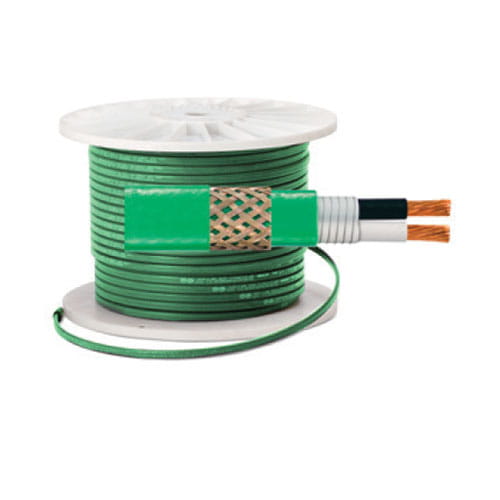power limiting heating cables ?
Power limiting heating cables, also known as constant wattage heating cables, are a type of electrical heating cable designed to deliver a fixed amount of power per unit length, regardless of the temperature of the surrounding environment. These cables are widely used in applications where consistent and predictable heat output is required. Here’s an overview of their operation, features, and applications

How Power Limiting Heating Cables Work
- Construction: Power limiting heating cables are typically composed of a series of resistive heating elements, often arranged in parallel or series, within an insulating jacket. The heating elements are made from materials with a relatively constant resistance over a wide temperature range.
- Constant Power Output: These cables are designed to produce a consistent wattage per unit length, regardless of the temperature changes in the surrounding environment. This means that the heat output remains constant and does not vary with temperature.
Key Features
- Consistent Heat Output: Power limiting heating cables provide a steady and predictable amount of heat, making them suitable for applications where uniform temperature maintenance is critical.
- Higher Power Densities: These cables can deliver higher power outputs compared to self-regulating cables, making them ideal for applications requiring more heat.
- Durability: Often constructed with robust materials, these cables are designed to withstand harsh environmental conditions, including exposure to chemicals, UV rays, and moisture.
- Temperature Tolerance: They can operate at higher temperatures than self-regulating cables, making them suitable for demanding applications.
Applications
- Process Temperature Maintenance: Used in industrial settings to maintain consistent temperatures in pipelines, tanks, and vessels.
- Pipe Freeze Protection: Suitable for environments where maintaining a specific temperature is crucial to prevent pipes from freezing.
- Snow Melting Systems: Used in outdoor applications, such as driveways, walkways, and stairs, to melt snow and ice.
- Roof and Gutter De-Icing: Ensuring that roofs and gutters remain free from ice dams and icicles, similar to self-regulating cables but providing a more constant heat output.
- Floor Heating: Providing even and consistent heating for residential and commercial floor heating systems.
Advantages
- Uniform Heat Distribution: Ensures even heating across the entire length of the cable
- High Power Output: Can deliver more heat compared to self-regulating cables, making them suitable for more demanding applications.
- Versatility: Suitable for a wide range of applications due to their consistent heat output and higher temperature capabilities.
Considerations
- Energy Consumption: Since they provide constant power output, they might consume more energy than self-regulating cables in some applications.
- Temperature Control: Often requires external temperature control devices (thermostats or controllers) to prevent overheating and ensure safe operation.
Conclusion
Power limiting heating cables are an excellent choice for applications requiring consistent and predictable heat output. Their ability to maintain a constant power output makes them ideal for industrial processes, freeze protection, snow melting, and de-icing applications. While they may consume more energy than self-regulating cables, their robust construction and high power densities make them indispensable in many critical heating applications.
